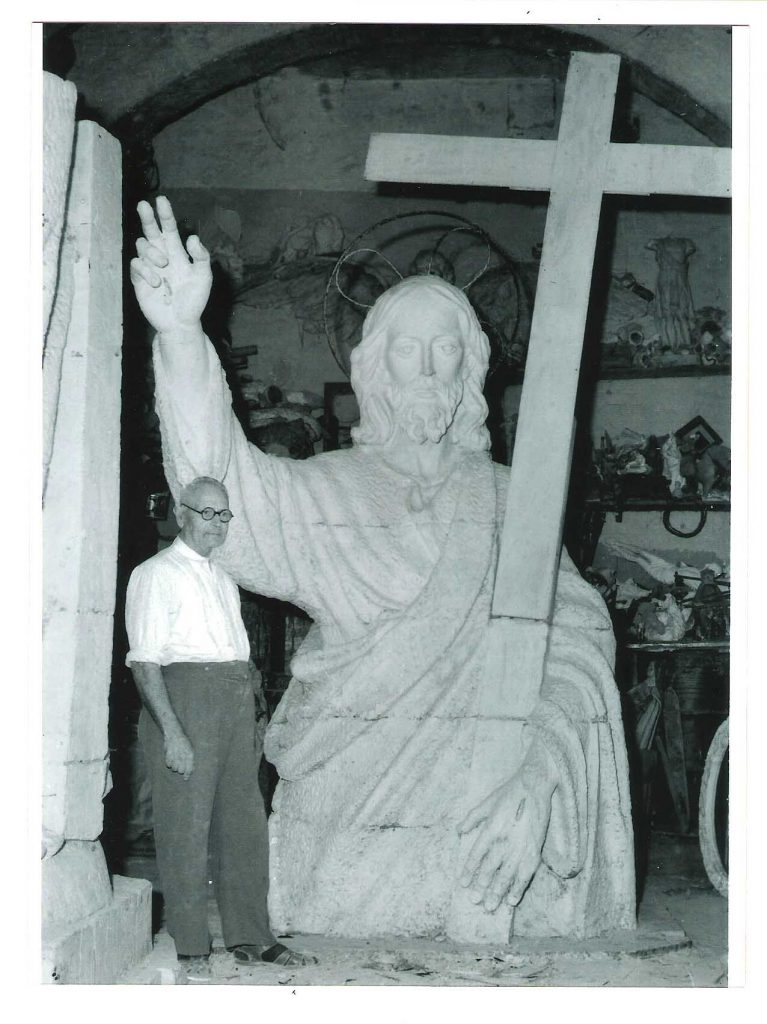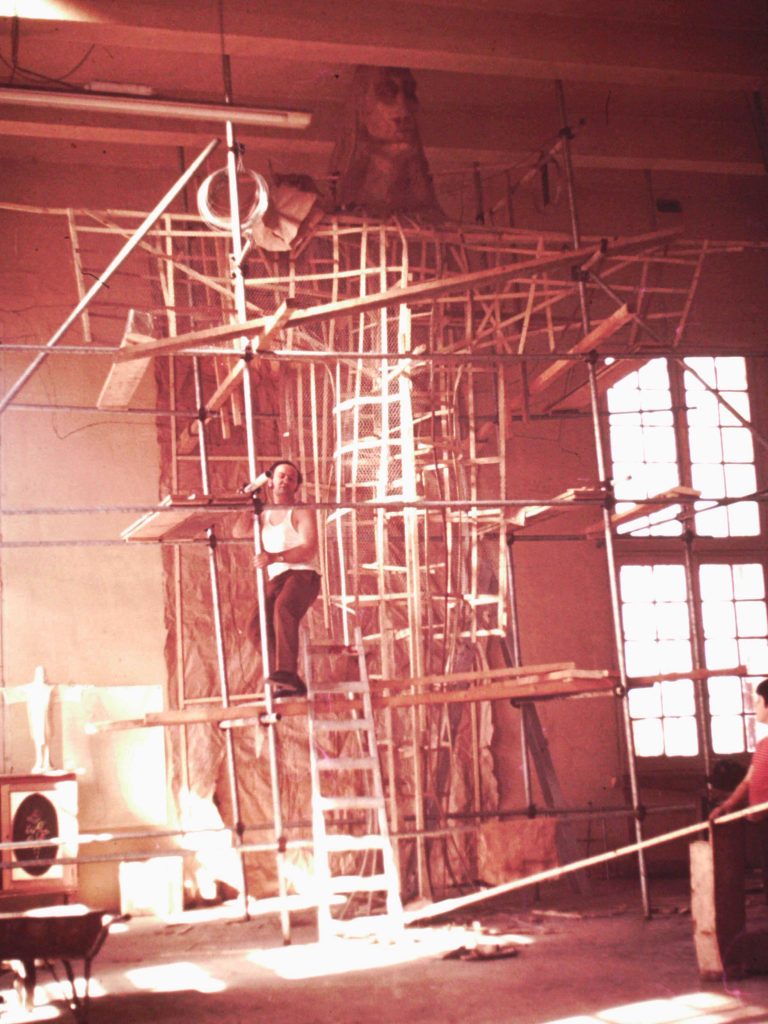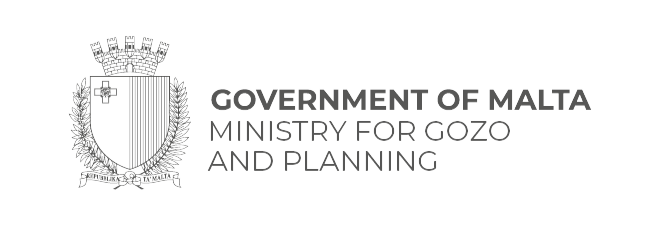If you are willing, able and faithful – then when you visit Gozo factor in a climb up to the statue of The Risen Christ. Towering 320-feet above sea level and punctuating the skyline at Tal-Merzuq hill – locally known as Tas-Salvatur Hill, the massive 6 metre high figure of Jesus Christ seems to embrace the island within his 6 metre arm span.
The climb up the hill can be steep and uneven in some parts, so a hat, water and walking boots are a must and try to avoid climbing during the fierce midday sun. The rewards of getting up close to this awe-inspiring statue are plenty; there is a calm serenity on the hilltop as you experience the amazing statue of Jesus close-up; you’ll also witness a 360-degree view of the rest of the island.
https://www.instagram.com/p/97-8fimxVR/
Jesus on Merżuq Hill is positioned amidst farmland, set back from the road linking the coastal resort of Marsalforn to Victoria (Rabat) the main town of Gozo.
This fiberglass coated concrete Jesus was fixed into position in July 1979 and is one of a number of Christ statues to have adorned the hill over the last few centuries.
https://www.instagram.com/p/BVVq3mTF5NC/
Today’s statue bears a striking resemblance to the Christ the Redeemer statue at Corcovado in Rio De Janeiro in Brazil. However, Is-Salvatur was modelled and cast by Gozitan based artist and schoolteacher Mr Carmel Grech, who at the time modelled his work on his young nephew Mario. Maybe this was a foretelling of the schoolboy’s destiny because this is the very same Mario Grech who is now the Bishop of Gozo.
When admiring Gozo’s skyline; you can easily locate the statue which is an important geographical and a liturgical landmark for pilgrims and islanders. Local hearsay and history books are rife with stories passed down across generations about the hill’s links to religion, retribution and the word of God.
Origin and folklore regarding Is-Salvatur Statue:
In 1901 a wooden cross was erected on top of the hill by farmers, so it could be seen from the seas; bringing hope and protection to fishermen arriving and leaving Marsalforn Bay. Three years later, in 1904 this was replaced by a stone statue depicting Jesus holding a large wooden cross created by Liberat Borg from Birgu, Malta.
Yet, decades before, in 1870, islanders recalled a stone statue of Our Saviour placed on the hill by a local farmer, who, during the midst of a dry arid summer, promised God he’d erect a statue in gratitude for much needed rain. During a subsequent rain-lashed thunderstorm, the farmer saw lighting illuminate the surroundings of Il-Merzuq hill and was instantly reminded of his previous pledge.
Another widely told tale centres on the hill’s original name Tal-Merzuq (meaning ray of light), which is believed to have come from a time when God sought to punish Gozitan people with three days of darkness. After three days of darkness, a ray of light was seen emanating from the hilltop. For many years, locals believed the hill was a dormant volcano, an unlikely belief most likely based on the hill’s pyramid like shape and tales of black smoke billowing from the hilltop. However, on a day when you ascend Il-Merzuq hill and look out over to Sicily with Mount Etna prominent in the background, it’s understandable why Gozitans may have believed this to be.
Unfortunately, Liberat Borg’s 1904 statue was ravaged by our climate on the exposed hilltop. So, in 1960, another statue of Our Saviour made from concrete and created from the designs of esteemed Gozitan sculptor Chev. Wistin Camilleri was erected.

This new statue portrayed Christ holding his cross, however it survived just 13 years, after it was struck by lightning during a violent thunderstorm. By the early 1970’s crumbled remains from the statue started tumbling down the hillside and the mount stood empty until the statue we see today was created.
As you can imagine, building such a large and heavy statue and installing this onto a precarious hillside was an extremely tricky task involving careful planning and military precision.


The layout of the land meant that cranes could not be used and hoisting sections via a helicopter was out of the question. So, the outer shell of the statue was divided into six parts and installed on a pedestal, then concrete mix was poured into the shell part filling the whole statue into one solid concrete structure.
Since the installation in the late 1970’s, the statue has since undergone restoration managed by workers from The Ministry for Gozo and Wirt Ghawdex. A section around Christ’s head was repaired after damage by a thunderbolt, specialist solar lighting was installed to illuminate Jesus at night, and the whole statue was given a gel coating to safeguard it from weather damage.

So, as you climb the hill, reflect on the mystery surrounding the mount, the history of the many Saviours who have guarded our people from the hilltop; and marvel at the resoluteness and resilience of our people. Or, you could just take a selfie.
https://www.instagram.com/p/Bn0jX-Qjdpx/
With thanks to: Paolo Camilleri Cauchi, Carmel Grech, Aaron Attard Hili & Chris Galea.
READ NEXT: Have you followed the path up to Ta’ Ġordan lighthouse?









